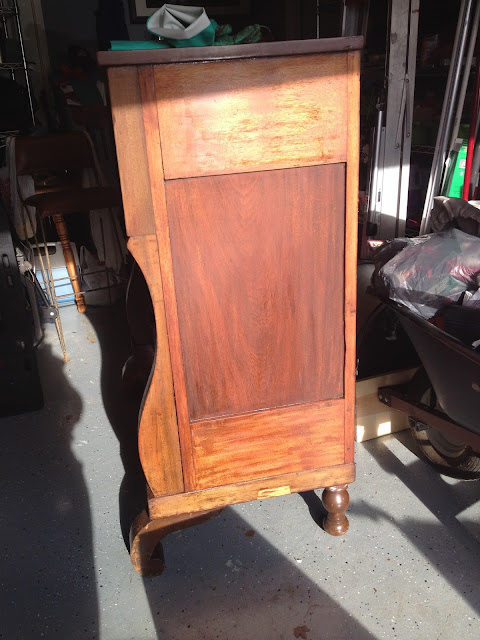It took me 6 months to actually finish this. There was snow on the ground when we picked this up. I hate sanding a lot, is what I'm saying.
But a few factors made this project a little easier than it might have been, and you probably want to keep them in mind unless you really like frustrating DIY projects:
- This guy is solid wood. No veneer to match and patch.
- I made sure to read the back of my stripper container, and only used it when the garage was within the recommended temperature range.
- My new favorite power tool, the random orbital sander. Just kidding, I still hate sanding, but I'd hate it even more if I had to sand this beast by hand.
- Some supports had already been added to the drawer bottoms, and they pulled out smoothly. This project was entirely cosmetic.
Here's what we started with. Not awful, but still needing some love. Which is why I picked it up for almost nothing. And I'm never scared of a little sweat-equity project.
As soon as I started stripping the old stain off, the wood underneath revealed itself to be gorgeous (if not wholly a consistent variety throughout the piece). Someone asked if I was going to chalk paint this, and...look, I know chalk paint has its lovers, and can transform chippy veneered pieces into something adorable. But if you have an antique, solid wood anything, and it's in great shape, and you chalk paint it, I'm not entirely sure we can be BFFs.
After 1 round of stripping, I was still working through layers of the thick, gloopy, waxy finish.
After the second round of stripping and sanding, I finally reached bare wood. It doesn't look like much, when its dry and covered in sanding dust, but if you get your wood a little damp, you can see its true colors shine through...
One step closer to the dream house...






























